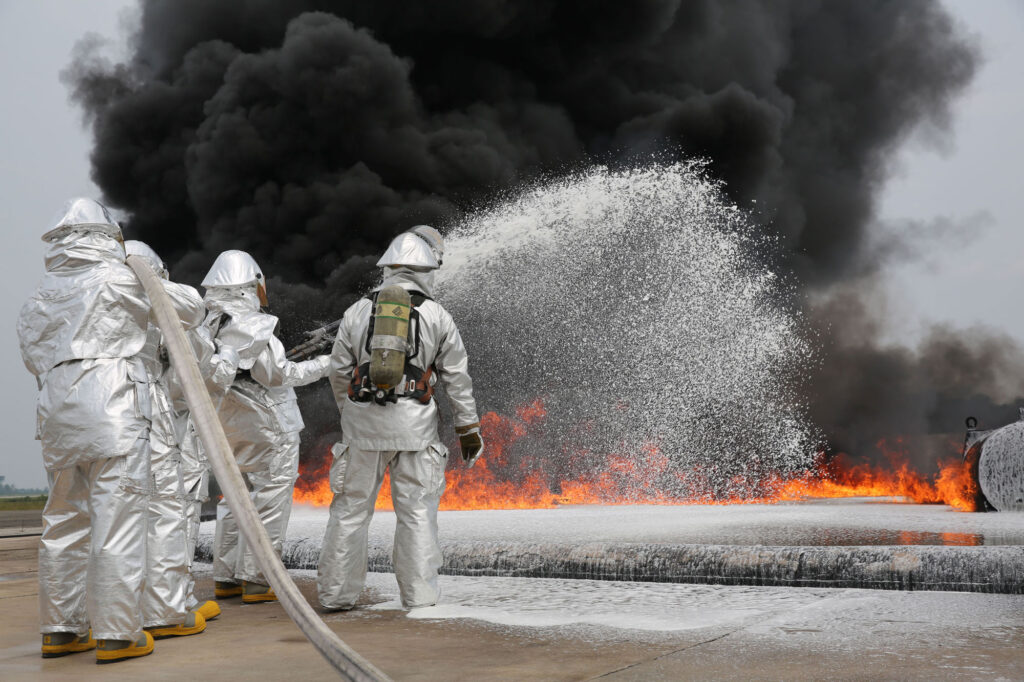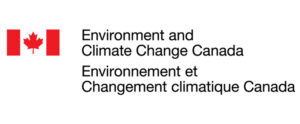Written on: June 1, 2022 by Cassandra Taylor
Per- and polyfluoroalkyl substances (PFAS) are a group of synthetic organofluorine chemicals that have been getting a lot of attention lately. My colleague Mae Hrycak barely scratched the surface of this topic in the April 2022 Regulatory Landscape edition of SPRAY. This column will expand on the topic and provide a more in-depth overview of current global PFAS regulatory trends.
Used in a wide range of consumer and industrial applications since the 1940s, PFAS are commonly known as “forever chemicals” due to the strong carbon-fluorine bond that makes them resistant to heat and chemical reactions. Since they comprise such a broad group of chemicals, PFAS can have a wide range of different physical and chemical properties and can exist as gases, liquids or solid polymers. PFAS are easily transported long distances through the environment, and they are not readily degraded, further magnifying their effects on the environment and water systems.

A recent field study noted that sea spray pollutes the atmosphere in coastal areas with PFAS chemicals.
PFAS can now be detected worldwide. Through a field study, scientists recently observed that sea spray pollutes the atmosphere1 with PFAS chemicals in coastal areas. When bubbles containing perfluoroalkyl acids (PFAAs)—a subgroup of the PFAS family—burst at the surface of saltwater, the compounds are ejected as aerosols. Sea spray aerosol particles can travel significant distances in the atmosphere, which suggests that sea spray could be a key route of transport for these persistent chemicals, especially around coastal communities.
Attributes of concern to humans include the bioaccumulation of certain PFAS in organisms, causing toxic effects to reproduction and development. Several PFAS have been demonstrated to cause cancer and some are suspected of having endocrine disrupting effects, although research is ongoing.
Given the concerning properties of this chemical family, it is no surprise that we are seeing regulatory bodies and even some industries around the world begin to aim their attention at controlling the exposure of PFAS to humans and the environment.

Due to their heat-resistant properties, PFAS have become a common ingredient in fire-fighting foams.
EU proposes PFAS ban in firefighting foams
Due to their heat-resistant properties, PFAS have become a common ingredient in fire-fighting foams. This has resulted in many cases of environmental contamination of soil and drinking water in the European Union (EU). The European Chemicals Agency (ECHA) has currently brought forward a proposal2 to restrict all PFAS in firefighting foams in the EU. The goal is to prevent further environmental contamination and mitigate the health risks to humans. ECHA has stated that an EU-wide restriction is justified because the risks posed by PFAS are currently not adequately controlled.
The proposal would ban placement on the market, use and export of all PFAS in firefighting foams with use or sector-specific transition periods that allow time for industry to find suitable replacements. Those still using PFAS-based foams during the transition period will need to ensure releases to the environment are minimized and that any expired or waste foams are disposed of in an appropriate way.
A six-month consultation started on March 23, 2022, which is open for interested parties to give evidence-based comments on the proposal. ECHA also hosted an online info session3 to explain the restriction process and assist stakeholders in taking part in the consultation.
EU moves toward comprehensive restrictions
Several specific, well-known PFAS are already identified in the EU as substances of very high concern (SVHCs) and subject to restriction. These include perfluorooctane sulfonic acid (PFOS), perfluorooctanoic acid (PFOA) and perfluorohexanesulfonic acid (PFHxS). However, since there are so many variations of PFAS, it is not practical to do a substance-by-substance risk assessment.
The EU plans to phase out PFAS for all but essential uses through the “Chemicals Strategy for Sustainability.”4 In addition to the proposed fire-fighting foam ban, five European countries (The Netherlands, Germany, Denmark, Sweden and Norway) are working on a restriction proposal that will cover all PFAS in other uses. The proposal is expected to be submitted in January 2023. The risk assessment pertaining to PFAS in firefighting foams is relevant for all PFAS, and thus it will smooth the path towards evaluating the risks in the broader context of chemical utilization.
Ski waxes flagged for Nordic non-compliance
A joint Nordic enforcement project that inspected articles and chemical products for restricted PFAS found that 15 out of 158 products examined exceeded the limits for PFOS and PFOA established in the EU’s Persistent Organic Pollutants (POPs) Regulation. Ski waxes were responsible for the most cases of noncompliance, as more than a third of ski waxes tested exceeded the limits, with this product group accounting for 14 out of the 15 non-compliant products. The project also searched for PFAS that are not yet restricted in chemical legislation. PFAS were detected in 65% of articles and 40% of chemical products tested. Many products, such as sport jackets, contained PFOS or PFOA at levels below the limit values, or contained other PFAS.

A UK Environmental Audit Committee report concluded that a “chemical cocktail” that includes PFAS and microplastics is polluting rivers across England.
UK river pollution
Earlier this year, the United Kingdom’s (UK) Environmental Audit Committee released a 137-page report on water quality in rivers. In the report, the committee concluded that a “chemical cocktail” that includes PFAS and microplastics is polluting rivers across England, creating a major risk to human health and the environment.
According to the report, PFOS was found in quantities above threshold levels in 46% of English rivers sampled, despite the chemical being prohibited globally under the 2009 Stockholm Convention on POPs. The report recommends that the Dept. for Environment, Food & Rural Affairs (DEFRA) commission a UK-wide survey of emerging pollutants and microplastic pollution in river environments.
The Health & Safety Executive (HSE) is conducting a regulatory management option analysis (RMOA) into PFAS. The call for evidence is now closed and the RMOA is expected in Summer 2022. The UK government is also expected to publish a new chemicals strategy this year.
PFAS added to Prop 65 list; other States pursue rulemaking
Due to industry push-back, PFAS-related legislation at the U.S. Federal level is currently stuck in limbo and significant progress is not expected any time soon. At the State level, it is a different story.
Perfluorononanoic acid (PFNA) and its salts; PFOS and its salts, and transformation and degradation precursors; and PFOA are the latest PFAS to be added to the California Proposition 65 list. Label warnings for these chemicals apply to products sold in the State of California.
Several U.S. States are beginning to implement restrictions to eliminate PFAS in food contact materials (FCMs). New York, Vermont, Connecticut, Minnesota and California have restrictions coming into force between now and 2024. Maine has delayed a similar ban, as regulators seek to first establish access to safer alternatives and ensure that compliance is possible. Additionally, as of Jan. 1, 2022, measures to restrict PFAS in firefighting products are now in effect in Arkansas, California, Illinois and Louisiana.
Canadian PFAS restrictions
In April 2021, the Government of Canada published a Notice of intent to address the broad class of per- and polyfluoroalkyl substances5. In the notice, the Canadian government stated it will continue to invest in research and monitoring of PFAS. It will also collect and examine information 
on PFAS to inform a class-based approach and review policy developments in other jurisdictions. In addition, it plans to publish a state of PFAS report in 2023, summarizing relevant information on the class of PFAS. Stakeholders are encouraged to provide feedback on the intent to address PFAS as a class, including any challenges or opportunities they foresee.
Environment & Climate Change Canada (ECCC) is expected to release a proposal to update the Prohibition of Certain Toxic Substances Regulations, which will involve new or additional limits on specific PFAS such as PFOS, PFOA and long chain perfluorocarboxylic acids (LC-PFCA). ECCC is now aiming for a late 2022 release for the proposal.
PFAS regulatory outlook
As PFAS continue to make headlines and pick up new restrictions around the world, they are also receiving increased attention from the public. Consumers are more aware than ever of the negative effects that can be caused by these “forever chemicals” and they will be on the lookout for products boasting safer alternatives.
We are beginning to see industries fold to the pressure of public health campaigns for safer products. For example, Restaurant Brands International (RBI)—parent company of fast-food chains Burger King, Popeyes and Tim Hortons—has recently announced that it will phase out PFAS from its food packaging by 2026. Other fast-food companies have been making similar commitments.
From retailer bans to new government strategies to phase out PFAS, the market will need to adapt and find new chemical alternatives. The reign of PFAS must come to an end to mitigate the human health and environmental hazards posed by this pervasive chemical family.
For more on PFAS and aerosol products, please turn to p. 8 of the Jun 2022 issue of SPRAY.
SPRAY
——————————————————————————————————————————————————–